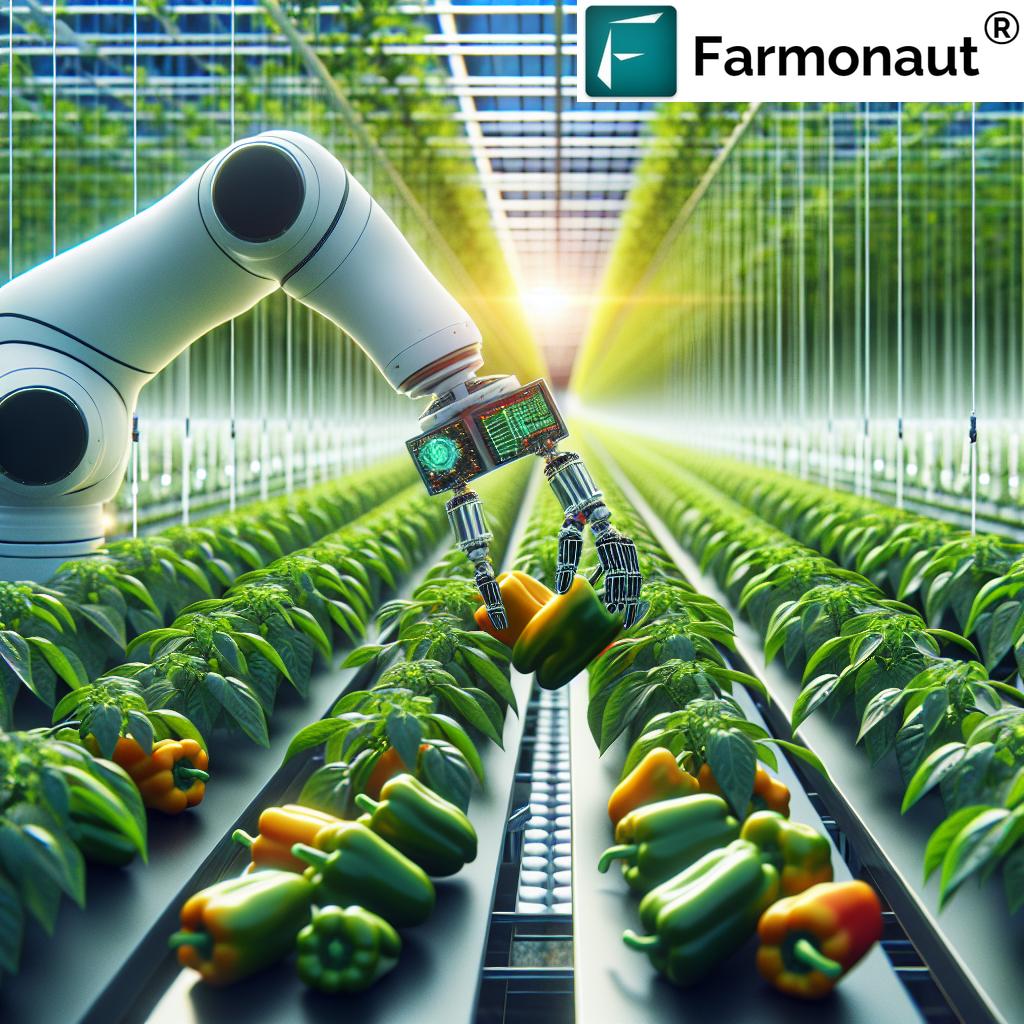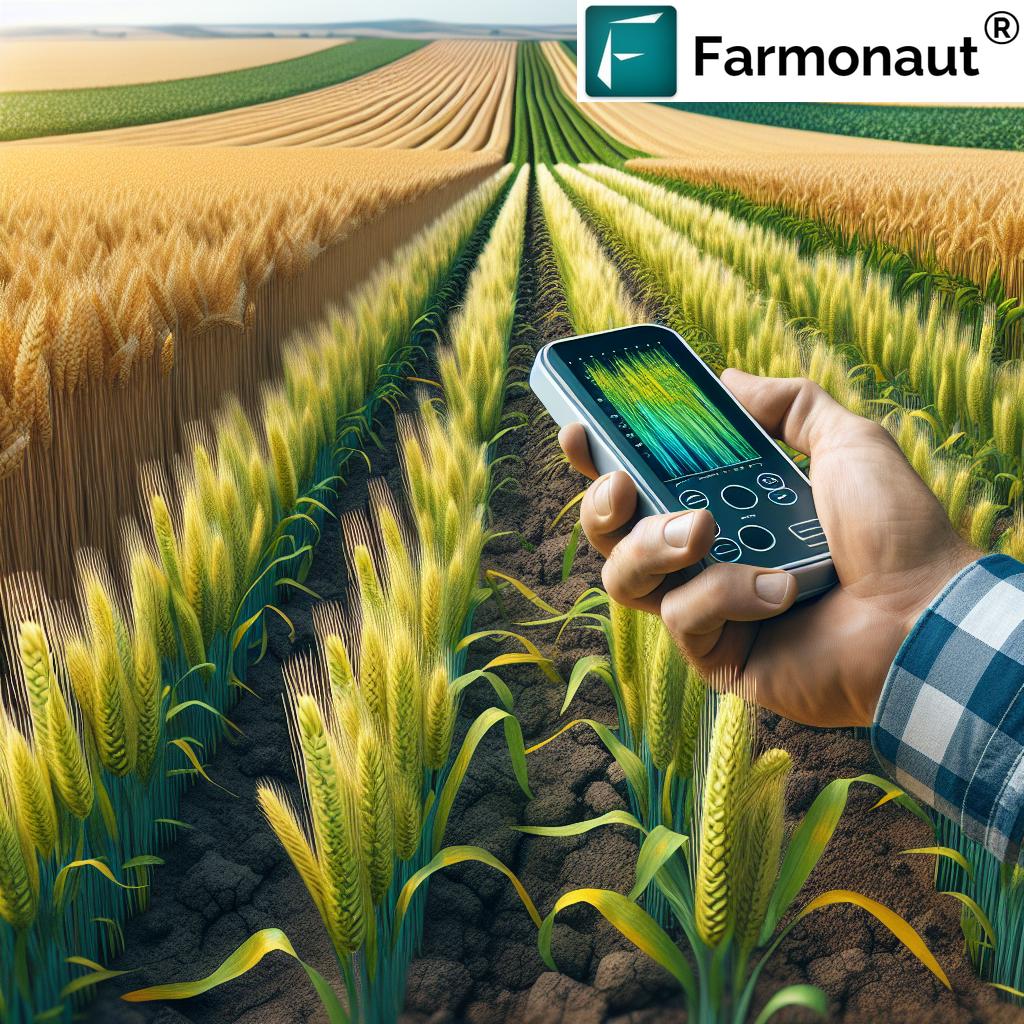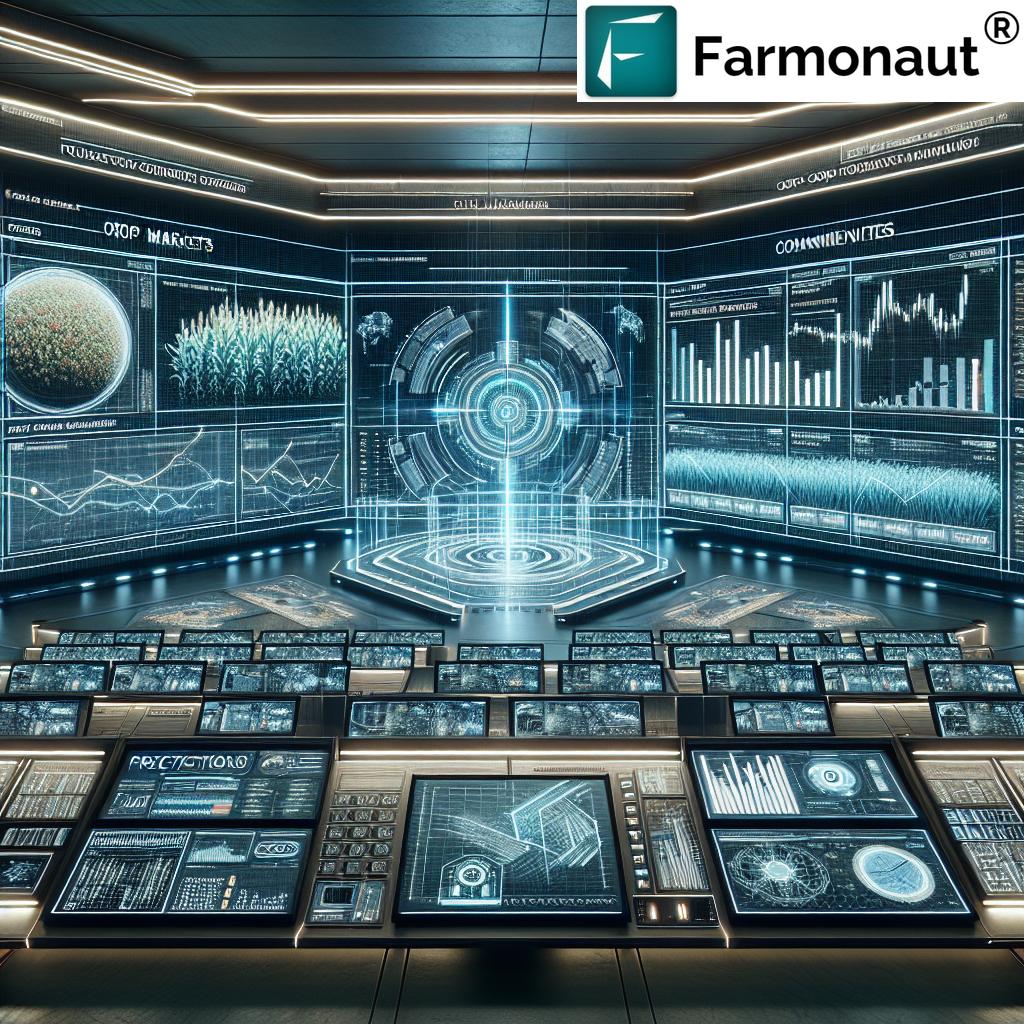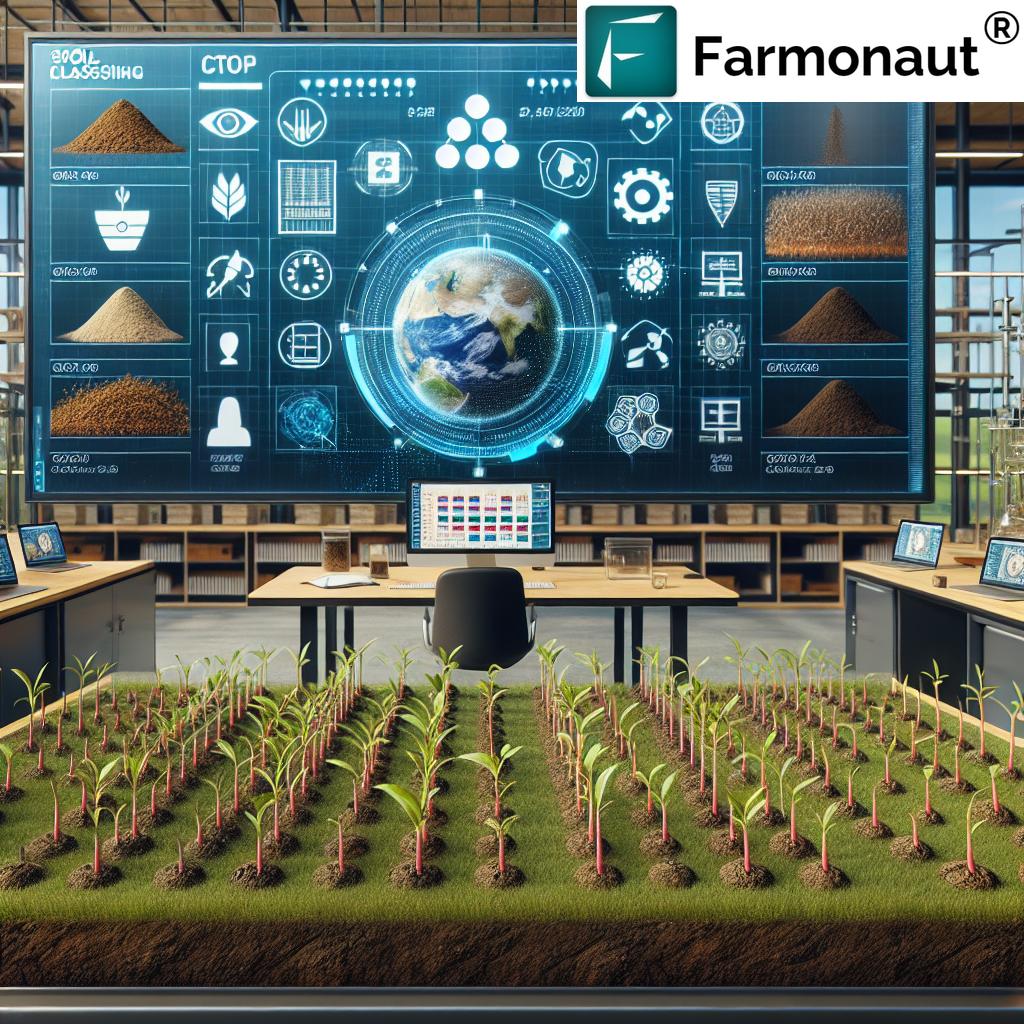Horticulture Automation: 7 Shocking Farming Breakthroughs
“Robotic harvesters can pick up to 10,000 strawberries per day, vastly outpacing manual labor in efficiency.”
Table of Contents
- Introduction: The New Era of Horticulture Automation
- Understanding Horticulture Automation & Its Importance
- 7 Shocking Horticulture Automation Breakthroughs
- Horticulture Automation Breakthroughs at a Glance
- Key Benefits of Horticulture Automation
- Challenges in Horticulture Automation
- Smart Solutions by Farmonaut for Precision and Sustainability
- The Future: How Automation is Reshaping Horticulture
- FAQs: Horticulture Automation & Technology
- Conclusion
Introduction: The New Era of Horticulture Automation
As we journey into the future of agriculture, one thing stands clear—horticulture automation is rapidly transforming farming as we know it. Advanced systems powered by AI, robotics, sensor networks, and intelligent automation are unlocking new heights in crop efficiency, quality, and sustainability. Manual labor is being supplemented—and in some tasks, replaced—by autonomous machines, making farming more productive, precise, and sustainable.
In this comprehensive blog, we explore seven shocking horticulture automation breakthroughs. We’ll show how AI-driven technologies and robotic advancements are boosting resource management, solving labor shortages, and bringing data-driven decision-making to the field and greenhouse. We’ll draw on industry knowledge and best practices, including state-of-the-art solutions from Farmonaut, to highlight both the benefits and the challenges facing the evolving horticultural industry.
Understanding Horticulture Automation & Its Importance
Horticulture automation is the integration of advanced technologies such as robotics, artificial intelligence (AI), and sensor systems into horticultural practices. This convergence aims to enhance efficiency, productivity, and sustainability in farming. The industry faces mounting challenges: unpredictable climate, labor shortages, resource waste, and the drive for consistent crop quality.
Let’s examine why automation is pivotal for modern horticulture:
- It addresses labor shortages by undertaking repetitive or physically demanding tasks efficiently and autonomously.
- It optimizes resources like water and nutrients, improving plant growth while minimizing costs and environmental impacts.
- It ensures precision and uniformity, supporting sustainable horticultural practices by reducing errors and waste.
- By integrating data analytics, it enables data-driven farming and better decision-making.
Horticultural automation is more than a technological evolution; it’s a necessity for the survival and prosperity of the agricultural sector.
7 Shocking Horticulture Automation Breakthroughs
Now, let’s dive into the heart of modern horticulture automation. Below, we unravel seven automation breakthroughs—each one revolutionizing how crops are grown, managed, and harvested.
“AI-driven horticulture automation has increased crop yield prediction accuracy by over 30% in recent field studies.”
1. Automated Crop Harvesting: Robots Redefining the Harvest
One of the most visually impressive breakthroughs in horticulture automation has been the rise of robotics in agriculture—especially within automated crop harvesting.
How Does It Work?
- Robots equipped with vision algorithms and specialized end-effectors identify, grasp, and detach produce—like sweet peppers—with remarkable accuracy.
- These autonomous systems utilize sensors and AI to recognize maturity and avoid damaging both fruits and plants.
- The aim? To reduce labor costs, boost precision, and increase the speed of the harvest compared to manual labor.
Why Is This Shocking?
Automated machines can harvest up to five times faster than humans for certain crops. For instance, robots can pick thousands of strawberries per day—remarkably improving efficiency and minimizing produce loss due to late harvesting.
The integration of these systems is driving significant gains for farmers who face labor shortages and rising operating costs.
Learn more about how robots are transforming harvesting in protected environments and large farms with the latest research.
2. Automated Weeding Solutions: Chemical-Free Precision
Weeding is labor-intensive and often involves the heavy use of herbicides. But automated weeding solutions are changing the game:
- AI-powered robots employ computer vision to identify and remove weeds without disturbing the crop or soil.
- Companies have introduced mechanical weeders that operate autonomously, greatly reducing dependency on manual labor.
- These robots also help minimize herbicide usage and, as a result, have a positive environmental impact by reducing chemical runoff into water sources.
For instance, companies like FarmWise have led the development of such automated systems. [Learn more here.]
3. Robotics in Pollination: Ensuring Resilient Crop Yields
Natural pollinators such as bees are essential to horticulture, but environmental factors and disease can render them scarce. Automated pollination is now a vital solution in controlled environments like greenhouses and vertical farms:
- Robotic pollinators utilize technologies such as air-jets and ultrasonic waves to mimic natural pollination processes, ensuring effective pollination even when natural agents are absent.
- These automated systems can increase crop yield consistency and improve fruit quality by ensuring uniform pollination.
- AI in horticulture enables these robots to adapt pollination strategies based on real-time crop and flower data.
The innovation is especially critical for high-value crops grown in greenhouses.
[Discover more from recent research.]
4. Precision Irrigation Systems: Smarter Water, Healthier Plants
In a world confronting water scarcity, precision irrigation systems are revolutionizing resource management in horticulture:
- Drip irrigation and sensor-based irrigation systems deliver water and nutrients directly to plant roots using real-time soil moisture data.
- This method conserves water, ensures optimal plant growth, and minimizes wastage of both water and nutrients.
- When integrated with AI, these systems enable automated real-time adjustments, further reducing resource use and operational costs.
Discover how technology guides sustainable horticulture and furthers automation-driven efficiency.
To monitor soil moisture, you can leverage Farmonaut’s real-time satellite-based crop monitoring app—available on web, Android, and iOS.
5. AI in Horticulture Management: Intelligent Crop Care
The use of AI in horticulture is central to the automation revolution. AI and machine learning algorithms facilitate:
- Real-time monitoring of plant health, using spectral data from satellites and drones.
- Predictive analytics to anticipate disease, nutrient deficiencies, or irrigation needs.
- Automated advisories—like those provided by Farmonaut’s Jeevn AI Advisory System—to guide farmers in daily crop management.
- Dynamic adaptation to changing environmental or crop conditions, reducing need for manual intervention.
The sophistication of AI-driven horticultural practices improves yield prediction accuracy, quality, and overall resource optimization.
Explore more on how AI augments automation and sustainability in detail at this blog.
6. Data-Driven Farming & Sensor Integration: Making Smarter Decisions
Modern automation in horticulture would not be possible without a foundation in data-driven farming and sensor integration:
- Sensor networks monitor temperature, humidity, soil moisture, light, and nutrient levels across fields and controlled environments.
- These systems autonomously collect, transmit, and analyze data, allowing farmers to make more informed decisions.
- Automation technologies perform repetitive tasks based on this data, thus increasing efficiency and reducing the margin for human error.
For robust crop health monitoring at scale, Farmonaut provides solutions that turn satellite and sensor data into actionable insights—making precision agriculture accessible globally.
Explore Farmonaut’s API for custom solutions and system integrations:
Farmonaut API |
API Developer Docs.
7. Modular and Open-Source Robotic Systems: Customizable Automation for All
The next breakthrough is the introduction of modular automation systems and open-source robotic platforms:
- Modular systems like the Modular Automated Crop Array Online System (MACARONS) allow growers to configure automation according to their specific needs—lowering the entry barrier to adoption.
- Open-source codebases and scalable hardware make it easier for smaller growers to harness automation and data-driven farming practices.
- These solutions can be customized for vertical farming, greenhouses, and diverse horticultural crops.
Want to dig deeper into modular robotic automation? Read the research.
Horticulture Automation Breakthroughs at a Glance
| Breakthrough | Technology Name | Automation Function | Estimated Efficiency Increase (%) | Labor Reduction (%) | Sustainability Impact |
|---|---|---|---|---|---|
| Automated Crop Harvesting | Robotic Harvesters | Detect, grasp, & detach produce | 30-50 | 60-80 | Reduces waste, optimizes crop quality |
| Automated Weeding Solutions | AI Mechanical Weeders | Identify & remove weeds, no chemicals | 25-35 | 50-70 | Cuts herbicide use, safer environment |
| Pollination Robotics | Robotic Pollinators | Mimic natural pollination | 15-25 | 20-30 | Stable yields despite pollinator loss |
| Precision Irrigation Systems | Drip & Sensor-based Irrigation | Deliver water/nutrients based on data | 20-35 | 30-50 | Conserves water, reduces runoff |
| AI in Horticulture | AI Management Systems | Health monitoring, prediction, advisories | 25-40 | 20-40 | Improved resource allocation |
| Data/Sensor-Driven Farming | IoT Sensor Integration | Real-time monitoring & action | 15-25 | 20-35 | Lowered waste, precise management |
| Modular Robotic Systems | Open/Modular Platforms | Custom automation across farms | 20-30 | 30-50 | Accessible & scalable solutions |
Key Benefits of Horticulture Automation
What advantages do automation, AI, and robotics bring to horticultural operations?
-
Labor Efficiency & Cost Reduction:
- Automated systems perform repetitive tasks 24/7, minimizing labor costs and solving shortages.
- Farmers can focus on more complex management activities while automation handles time-consuming chores.
-
Resource Optimization:
- Precision in water, fertilizer, and nutrient application reduces waste and drives environmental sustainability.
- Automated systems also support carbon footprinting—helping growers measure, manage, and reduce emissions efficiently.
-
Enhanced Crop Yield & Quality:
- Consistent, data-driven practices result in higher yields and better quality produce.
- Automated harvesting systems improve post-harvest handling and reduce losses.
-
Sustainability & Reduced Environmental Impact:
- Automation and AI enable sustainable horticulture practices—minimizing chemical use, conserving water, and supporting ecosystem health.
- Traceability solutions like blockchain-based product traceability promote transparency from farm to table, building consumer trust and reducing fraud.
-
Data-Driven Decision Making:
- Access to real-time data allows for proactive management—for irrigation, fertilization, pest control, and more.
- This enhances productivity and reduces risk.
For a holistic approach, Farmonaut’s platform combines these benefits through satellite monitoring, AI advisories, fleet/resource management, and large-scale farm monitoring tools.
Challenges in Horticulture Automation
While the promise of automation is vast, several challenges must be addressed to ensure broad adoption in the horticultural industry:
-
High Initial Investment:
- The upfront cost of automated systems can be substantial, often deterring small-scale farmers. Finding ways to make automation affordable is key.
-
Technical Complexity:
- Operating and maintaining advanced equipment requires expertise and ongoing training.
- This skills gap can be reduced with user-friendly platforms and customized support.
-
Adaptability Issues:
- Automated robots may struggle with site-specific variability—different environments, crop types, and farm layouts require flexible designs.
-
Data Privacy Concerns:
- With more data collection and online integration, farmers need assurance about data ownership and privacy.
Despite these issues, advancing modular systems and subscription-based models—like those from Farmonaut—make automation more accessible.
Smart Solutions by Farmonaut for Precision and Sustainability
Choosing the right automation partner is critical. Farmonaut stands out with its innovative agricultural technology platform that democratizes access to precision tools:
-
Satellite-Based Crop Monitoring:
Farmonaut leverages multispectral satellite imagery for continuous crop health monitoring, detecting changes in vegetation, soil moisture, and overall crop status. Farmers see actionable insights for improved irrigation, fertilizer optimization, and pest management.
Try Farmonaut Web & Mobile App -
AI-Driven Advisory (Jeevn AI):
Providing real-time crop management recommendations fueled by satellite and weather data, the Jeevn AI system empowers precision at every decision point—improving productivity at scale. -
Blockchain-Based Traceability:
Farmonaut’s blockchain-based traceability tools track a product’s journey across the supply chain, fostering consumer trust and transparency and aiding in food safety compliance. -
Resource & Fleet Management Tools:
Farmonaut simplifies fleet and machinery usage for agribusinesses—lowering costs while improving machinery safety and operational oversight.
Explore Fleet Management Solutions
-
Carbon Footprinting and Sustainability:
Precise carbon accounting helps farmers and organizations to measure, monitor, and reduce environmental impact. Track your carbon footprint with Farmonaut. -
Access to Financing:
Farmonaut supports crop loan and insurance verification through satellite-backed data, improving financial accessibility for farmers while reducing institutional risk.
Most importantly, Farmonaut’s advanced systems are affordable, scalable, and user-friendly—empowering everyone from individual growers to large-scale agribusinesses.
Do you want to power up your farm? Try the Farmonaut platform now.
The Future: How Automation is Reshaping Horticulture
We are on the cusp of a revolution—a future where horticulture automation is seamless, adaptable, and universally accessible. Here’s what lies ahead:
-
Open, Modular, and Scalable Automation:
Expect more open-source systems, modular designs, and plug-and-play automation options, enabling cost-effective solutions for operations of any size. -
Smarter AI and Machine Learning:
Automation systems will continuously learn and adapt, handling increasing complexity—from predicting diseases to real-time resource balancing. -
Sustainability at the Core:
Every step will be designed with environmental stewardship in mind: from optimizing resource usage to minimizing emissions. Farmers will meet both production and sustainability targets. -
Affordability and Wider Adoption:
Subscription-based models and remote access tools (like those from Farmonaut) will lower the cost bar—placing advanced automation within everyone’s reach.
The evolution of agricultural technology will keep breaking boundaries, ensuring food security and sustainable practices for generations to come.
FAQs: Horticulture Automation & Technology
1. What is horticulture automation?
Horticulture automation is the integration of advanced systems—including robotics, AI, and sensors—into crop, greenhouse, and plant management to make farming more efficient, productive, and sustainable.
2. What are the biggest benefits of automation in horticulture?
- Reduces labor costs by automating repetitive or physically demanding tasks.
- Increases efficiency and consistency of field operations.
- Optimizes resource use for water, fertilizers, and energy.
- Supports sustainability through better data and environmental management.
3. What are major challenges in adopting horticulture automation?
- High upfront investment costs for automated equipment.
- Need for technical expertise and ongoing support.
- Adapting systems to diverse crop types and growing conditions.
- Data privacy and control over information generated by smart devices.
4. How does Farmonaut empower horticulture automation?
Farmonaut provides real-time crop health monitoring via satellite, AI-based advisory, resource and fleet management tools, and blockchain-enabled traceability—making precision automation affordable and effective for all scales.
5. Can small farmers use horticulture automation?
Absolutely! With affordable subscription models, modular solutions, and easy-to-use online platforms like Farmonaut’s, small and medium farmers can leverage automation for yield growth, efficiency, and sustainability—without major capital investment.
6. Where can I get started with precision automation on my farm?
Start by using Farmonaut’s app—get crop health insights, resource management, and AI-driven advisories to optimize your operations from day one.
Conclusion
Horticulture automation is not just the future—it’s happening right now. With robotics in agriculture, AI in horticulture, and sensor-driven systems, we are witnessing a technological revolution in the fields and greenhouses that feed the world. These breakthroughs reduce labor dependency, maximize efficiency and crop quality, and accelerate sustainability.
Industry leaders like Farmonaut are transforming the promise of automation into affordable, data-rich solutions for everyone—empowering traditional and modern farmers alike, globally.
Are you ready to join this revolution?
Experience precision agriculture, real-time monitoring, and sustainable farming—all in one platform.
Want to integrate your digital farm with powerful data APIs? Explore:
Farmonaut API |
API Developer Docs
For those seeking advanced tools in carbon management, loan/insurance verification, or traceability, check out:
- Carbon Footprinting
- Blockchain-based Product Traceability
- Crop Loan and Insurance Verification
- Fleet & Resource Management
- Large-scale Farm Management Suite
Let’s embrace the power of modern horticulture automation—for smarter, more resilient, and sustainable farming!














